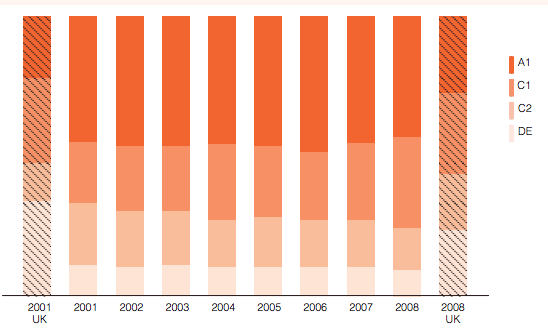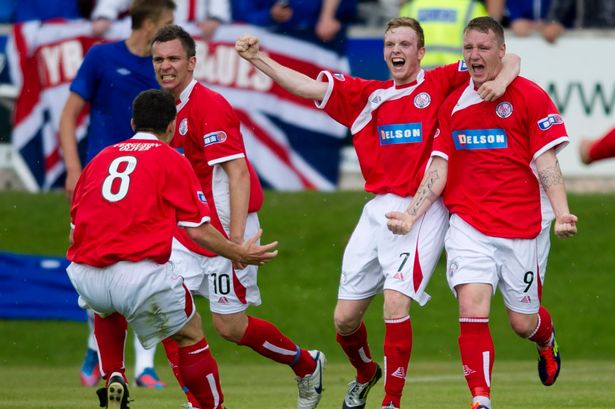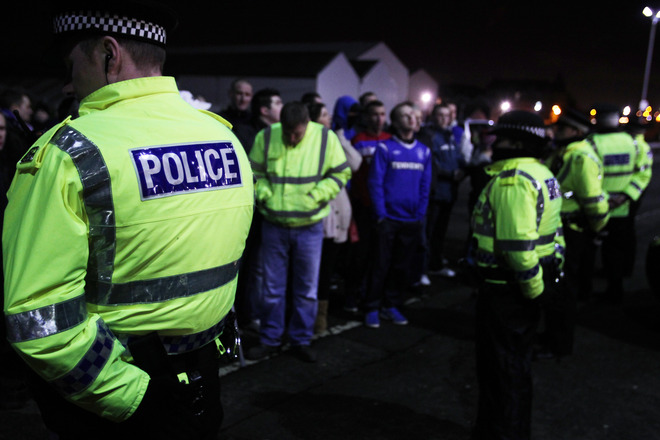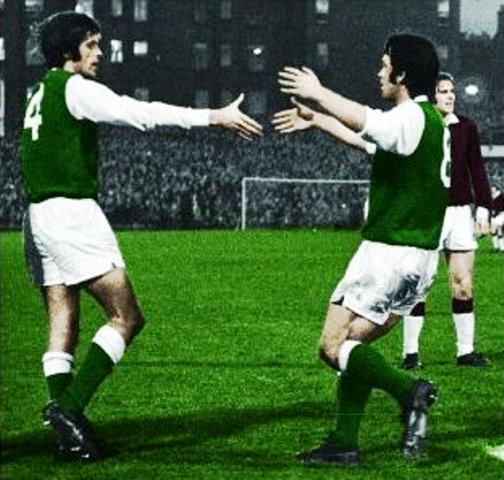As highlighted in previous articles, the economics of Scottish football are handicapped by our proximity to England and our location on the northerly edge of Europe, but the basics are sound. We are a world leader in getting bums on seats watching our games, the problem is 50% attend the games of just two clubs. Some further analyses provide some interesting additional data;
|
Town |
Population |
Total Ave |
% |
|
Glasgow |
650,000 |
90,000 |
14 |
|
Edinburgh |
495,000 |
24,000 |
5 |
|
Aberdeen |
212,000 |
12,000 |
6 |
|
Dundee |
141,000 |
16,000 |
11 |
|
Kilmarnock |
45,000 |
6,000 |
13 |
|
Perth |
45,000 |
4,000 |
8 |
|
Motherwell |
30,000 |
5,500 |
18 |
|
Inverness |
72,000 |
4,500 |
6 |
|
Paisley |
74,000 |
5,000 |
7 |
|
Dunfermline |
48,000 |
6,000 |
12 |
|
Falkirk |
35,000 |
5,500 |
16 |
|
Dingwall |
5,000 |
4,000 |
80 |
Typical when a town or city have a club(s) in Scotland’s top flight, the % population share at SPL games circa 10%
(excluding the outlier Dingwall as 80% of it’s population attend and this would skew the numbers).
The average is 10% and this is the level EPL clubs target as potential attendance levels. Obviously there are variants across Scotland, but the low levels for Scotland’s second and third most populous cities is extremely disappointing. Edinburgh is split between two teams and at least has the excuse of a second sport tugging at the purse strings of the city sport fans with rugby the traditional sport for that town, but Aberdeen…
Aberdeen is a one-club town with a population over 200,000. Aberdeenshire (which does not contain the city) has a further 200,000+ population. To be exact, at the last census, these two areas had a combined population of just under 500,000. Based on the 10% rule of just the city, they should be averaging a sell out virtually every week. And then there is the general economy with unemployment rates in Aberdeen and Aberdeenshire less than half the Scottish average and average salaries in Aberdeen 20% higher than the rest of Scotland.
It is in these stats that many argue why Aberdeen does have lower crowds;
Aberdeen is middle class and football in Scotland is a working mans game. Well that is just nonsense. The solution to that comes from marketing and facilities.
As can be seen from the graph below, football in the UK is now a middle class game with a higher proportion of A1’s attending football than exist in society as a whole. In order to pay for the EPL English football have changed that, especially for the top league. They have done that through marketing the game and better facilities. Aberdonians reading this will be able to tell me, but my perception is that they do what the rest of our game does and once a year market season books to their existing customer base. Certainly I do know that (with the exception of Celtic and Rangers) like the rest of Scottish football Aberdeen have no marketing division within their business.
Demographic composition of Premier League fans and UK football fans as a whole

But for me the real driver is facilities. Aberdeen proudly boasted about have the first all seater stadium in Scotland and yes they did build a modern stand approximately 15/20 years ago but the rest… What other leisure/entertainment industry builds facilities and STILL 20+ years after the initial capital spend boasts about how modern the facilities are? And you can’t tell me that Aberdeen couldn’t attract serious levels of long-term capital to invest in a truly breathtaking sports entertainment facility.
We have had the oil boom for over 40 years and recent changes in technology and oil prices mean that expectations are that there is sufficient potential revenue to build anew for another 40 years. With approx. 10% of the population Aberdeen (and shire) account for more than 26% of Scotland’s private sector turnover. Aberdeen city combined turnover is just under £55bn, more than 21% of Scotland’s total of £257.5bn. Aberdeen is the centre of inward investment into Scotland. 50% of foreign investment in Scotland in 2011 was from the USA, excluding Amzon’s investment in Dunfermline, the bulk of that went to Aberdeen. You can’t tell me some of that money and investment could not have been diverted to Aberdeen. Which begs the question of whether the local worthies have actively sought this money?
Through a succession of managers, Aberdeen have languished mid-table for 20 years. Unlike other centres of inward investment throughout the world, they appear incapable of capitalizing upon being a one-club town in the most affluent part of Scotland. In the context of the numbers above, Stewart Milne’s reign at Pittodrie can only be catagorised as an absolute disaster. He has failed to market the club to new customers and has failed to source the necessary investment to create the facilities that a more affluent market seeks and would in the long run turn the Dons into a major player on the European stage.
I started this piece by identifying the need for Celtic to have a challenge. The economics suggest that this challenge SHOULD be from Aberdeen and Edinburgh. By far the team best placed to offer that challenge is Aberdeen. They SHOULD have major support from multinationals, as multi-nationals do throughout the world. The SHOULD have major support from the locals, as local do throughout Scotland. They SHOULD have a 30,000+ stadium minimum ¾ full every week.
Put simply – Aberdeen SHOULD be our challengers.




